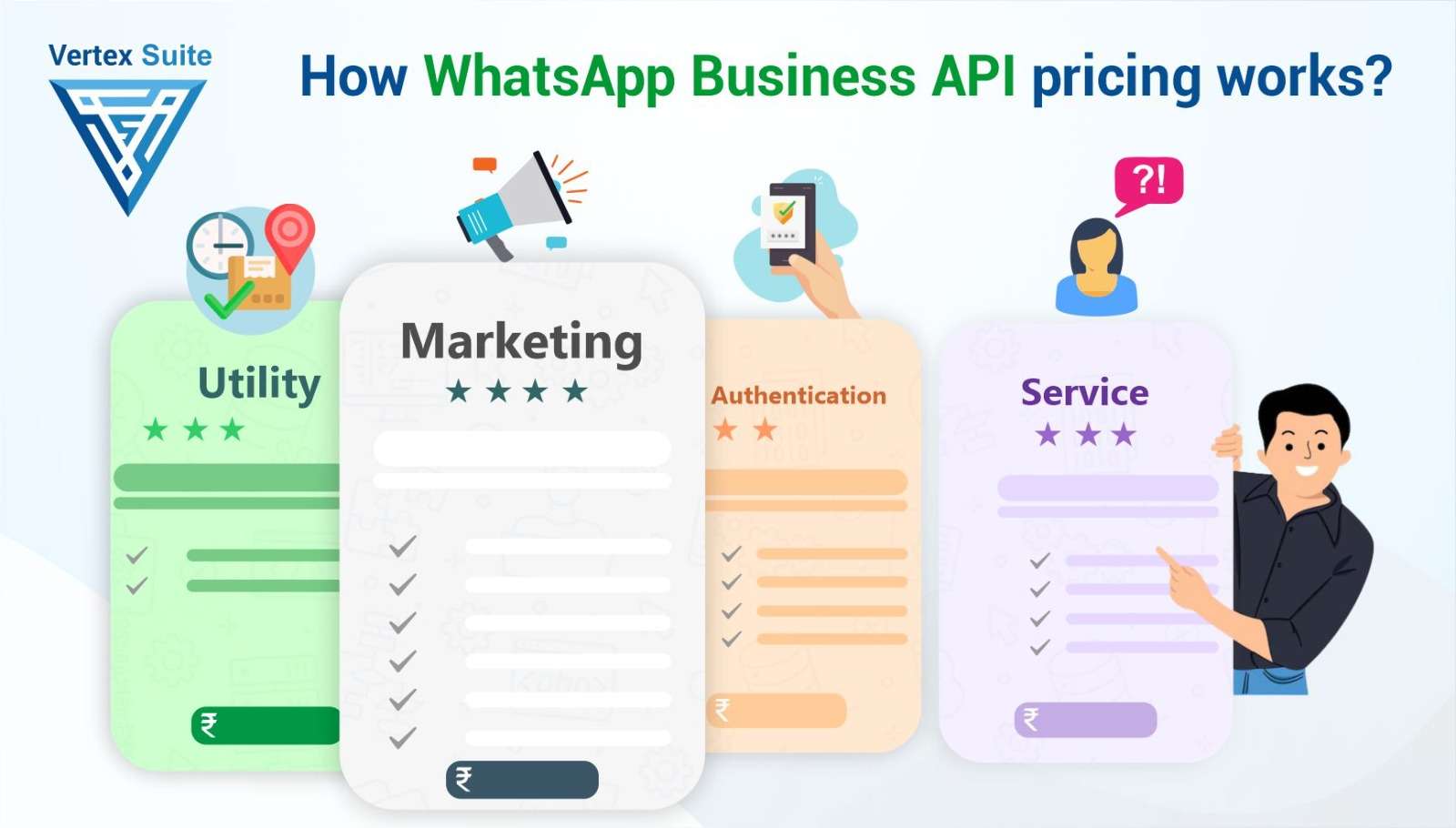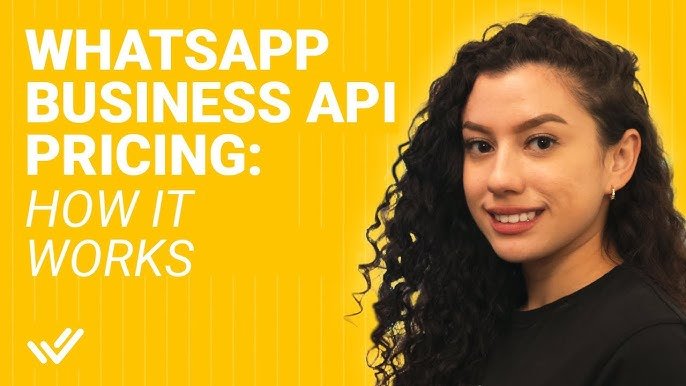Understanding how WhatsApp Business API pricing works can be confusing. Let’s break it down clearly and simply.
WhatsApp Business API helps businesses connect with customers. It’s a valuable tool for customer service and marketing. But how much does it cost? The pricing can vary based on several factors, including the number of messages sent and the countries involved.
Different pricing models can apply, such as pay-as-you-go or subscription-based. Knowing these details can help businesses plan their budgets better. This guide will explain the key aspects of WhatsApp Business API pricing. By the end, you will have a clear picture of how it works and what to expect.

Credit: www.brevo.com
Introduction To Whatsapp Business Api
WhatsApp Business API helps businesses connect with customers. It offers a platform for messaging. Businesses can send updates, alerts, and support messages. This API helps companies streamline communication.
What Is Whatsapp Business Api?
WhatsApp Business API is a tool for medium and large businesses. It allows automated messaging. It supports customer service and notifications. The API integrates with CRM systems and other software. Businesses can send and receive messages at scale.
Importance For Businesses
WhatsApp Business API is crucial for customer engagement. It offers a direct line to customers. Businesses can provide quick support. They can send order updates and reminders. This builds trust and satisfaction. Happy customers are more likely to return.
Using the API also saves time. Automated messages reduce manual work. Staff can focus on complex issues. This boosts efficiency. Efficient operations lead to better service. Better service means happy customers.
Pricing Structure
The WhatsApp Business API offers a clear and straightforward pricing structure. This is crucial for businesses planning their communication budgets. Understanding this structure helps in making informed decisions about using the API for customer engagement.
Message Categories
WhatsApp Business API categorizes messages into two main types: Session Messages and Template Messages.
- Session Messages: These are messages exchanged during a customer-initiated session. They happen within a 24-hour window from the last customer message.
- Template Messages: These are pre-approved messages sent outside the 24-hour session window. They are often used for notifications, alerts, and updates.
Cost Per Message
The cost per message varies based on the type of message and the region. Here’s a general breakdown:
| Message Type | Region | Cost per Message |
|---|---|---|
| Session Messages | Global | $0.005 – $0.01 |
| Template Messages | Asia | $0.01 – $0.02 |
| Template Messages | USA | $0.02 – $0.03 |
| Template Messages | Europe | $0.015 – $0.025 |
These costs can vary based on the specific provider and additional services offered. Always check with your provider for exact pricing details.
Session Messaging
Understanding session messaging is crucial for businesses using the WhatsApp Business API. This process allows businesses to communicate with customers within a specified time frame. Let’s delve deeper into how session messaging works and its pricing structure.
24-hour Window
The 24-hour window is a key aspect of session messaging. When a customer sends a message to a business, a 24-hour session starts. During this time, businesses can send unlimited messages without additional charges.
This window is designed to facilitate quick and efficient communication. Businesses can resolve customer queries within this period, improving customer satisfaction. If the session exceeds 24 hours, a new charge applies for further messages.
Customer-initiated Messages
Customer-initiated messages are messages sent by customers to businesses. These messages start the 24-hour session. The initial message from the customer does not incur any charge for the business.
Businesses should encourage customers to initiate conversations. This strategy helps in reducing costs and ensures that the business is only charged for messages sent outside the 24-hour window. Effective customer engagement can maintain active sessions and optimize messaging costs.
| Message Type | Description | Cost |
|---|---|---|
| Customer-Initiated | Message sent by customer to start session | No cost |
| Business Message within 24-Hour Window | Business response within session | No cost |
| Business Message after 24-Hour Window | Business message sent after session ends | Charged |
Understanding these concepts ensures businesses can effectively manage their messaging costs. By focusing on customer-initiated messages and resolving issues within the 24-hour window, businesses can save money while providing excellent customer service.
Template Messaging
Template messaging is a key feature of WhatsApp Business API. It allows businesses to send pre-defined messages to customers. These messages can be transactional updates, notifications, or reminders. Using templates ensures the messages are consistent and comply with WhatsApp policies.
Pre-approved Templates
Businesses must use pre-approved templates for messaging. This means each template needs WhatsApp’s approval before use. The approval process ensures the messages meet guidelines. Templates should be clear and relevant to the customer. This step helps avoid spam and maintains trust.
Charges For Template Messages
Sending template messages involves certain charges. The cost varies based on regions and message types. Businesses pay for each template message sent. The charges can differ for different countries. It’s important to understand these costs for budget planning. Knowing the charges helps in effective use of the API.
Country-specific Pricing
Whatsapp Business API pricing varies by country. This is called Country-Specific Pricing. Different countries have different rates. Understanding these differences helps businesses budget effectively.
Regional Variations
Pricing for the Whatsapp Business API depends on the region. Each country has its own rates. These rates reflect local economic conditions.
For instance, messaging costs in the United States differ from those in India. This is due to currency values and local markets. Businesses must be aware of these regional variations.
Let’s explore some examples of these country rates.
Examples Of Country Rates
Here are some examples of Whatsapp Business API rates for different countries:
| Country | Rate Per Message |
|---|---|
| United States | $0.0085 |
| India | $0.0042 |
| United Kingdom | $0.0058 |
| Brazil | $0.0037 |
These rates show how country-specific pricing works. The United States has higher rates compared to Brazil. Businesses should plan their messaging strategy accordingly.
Understanding these rates helps in making cost-effective decisions. It allows better budget management for messaging.

Credit: www.youtube.com
Partner Providers
Partner Providers play a crucial role in utilizing the WhatsApp Business API. They act as intermediaries, offering businesses access to WhatsApp’s services. Partner providers simplify the integration process and provide additional support.
Choosing A Provider
Selecting the right partner provider is essential. Different providers offer unique features and services. Consider these factors:
- Reliability: Ensure the provider has a good track record.
- Support: Look for 24/7 customer support.
- Integration: Check if they support your existing systems.
- Pricing: Compare costs to find the best deal.
Provider Pricing Models
Partner providers use various pricing models. Understanding these can help you make an informed decision. Common pricing models include:
- Per Message: Charges based on the number of messages sent or received.
- Monthly Subscription: A fixed monthly fee for a set number of messages.
- Pay-as-You-Go: Pay only for what you use, with no fixed fees.
Some providers may offer tiered pricing. This means the cost per message decreases as your usage increases. Always review the detailed pricing plans before making a choice.
| Provider | Pricing Model | Cost |
|---|---|---|
| Provider A | Per Message | $0.01 per message |
| Provider B | Monthly Subscription | $100 per month |
| Provider C | Pay-as-You-Go | $0.02 per message |
Remember, the right provider can significantly impact your business’s communication efficiency.
Cost Optimization Tips
Cost optimization is crucial for businesses using the WhatsApp Business API. Properly managing your messaging costs can lead to significant savings. Below are some effective tips to optimize your spending.
Effective Use Of Templates
Using templates can help you manage costs effectively. Templates are pre-approved messages by WhatsApp. They ensure quick communication without extra charges.
- Create engaging and concise templates: Short, clear templates save time and money.
- Re-use approved templates: Re-using approved templates avoids additional approval costs.
Always update your templates to meet customers’ needs. This keeps your communication efficient and cost-effective.
Monitoring Message Volume
Tracking your message volume helps control costs. High message volumes can lead to higher charges.
- Set a monthly message limit: Monitor and adjust based on business needs.
- Analyze message performance: Identify which messages are necessary and which can be reduced.
Use analytics tools to track message volume. This helps in understanding patterns and making informed decisions.
| Tip | Benefit |
|---|---|
| Use Templates | Reduces time and approval costs |
| Monitor Volume | Controls message-related expenses |
By implementing these tips, businesses can optimize their costs effectively.
Future Pricing Trends
Future pricing trends for the WhatsApp Business API are crucial for businesses. These trends will impact costs, strategies, and communication methods. Understanding these trends helps businesses budget effectively. Let’s explore the predicted changes and their impact on businesses.
Predicted Changes
Experts predict a shift to more flexible pricing models. Subscription-based plans might become popular. This approach offers a predictable monthly fee. Pay-per-message pricing may also gain traction. Businesses will pay for what they use. Tiered pricing structures could become common. Different tiers will offer varied features and limits. This caters to businesses of all sizes.
Impact On Businesses
Flexible pricing models will help small businesses. They can choose plans fitting their budgets. Predictable monthly fees make financial planning easier. Larger businesses may benefit from pay-per-message options. They will pay based on usage, avoiding overspending. Tiered pricing structures offer scalable solutions. Businesses can upgrade as they grow. These trends will encourage more businesses to use WhatsApp API.
Overall, future pricing trends will make the WhatsApp Business API more accessible. This will benefit businesses of all sizes. It will also drive innovation in customer communication. Understanding these trends is key for future planning.

Credit: vertexsuite.in
Frequently Asked Questions
What Is Whatsapp Business Api Pricing?
WhatsApp Business API pricing is based on conversations. Costs vary by region and message type. Charges may apply for both user-initiated and business-initiated messages.
How Are Whatsapp Business Api Messages Billed?
Messages are billed per 24-hour conversation session. The session begins when the business replies to a user message. Charges depend on the message type.
Are There Different Rates For Message Types?
Yes, rates differ for user-initiated and business-initiated messages. User-initiated messages usually cost less. Business-initiated messages typically incur higher charges.
Do Regions Affect Whatsapp Business Api Pricing?
Yes, WhatsApp Business API pricing varies by region. Each region has different rates. Check WhatsApp’s official pricing page for specific regional costs.
Conclusion
Understanding WhatsApp Business API pricing is essential for managing costs effectively. Different pricing models cater to various business needs. By knowing these details, you can choose the best option for your business. This helps in optimizing communication with customers. Always review current pricing updates from WhatsApp.
Staying informed ensures you make the most cost-effective decisions. Remember, a clear strategy helps in maintaining budget and enhancing customer interactions.




